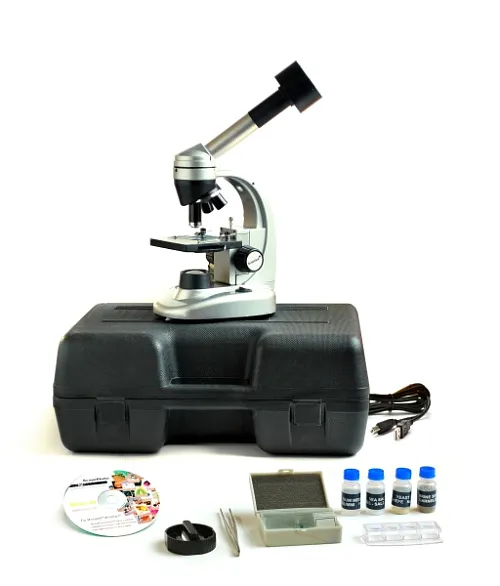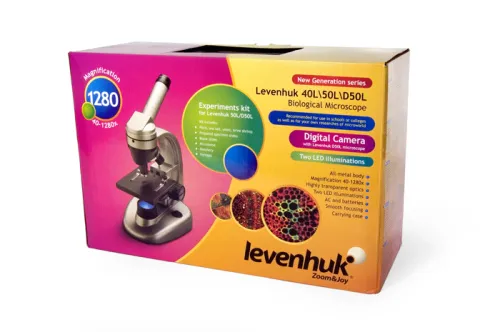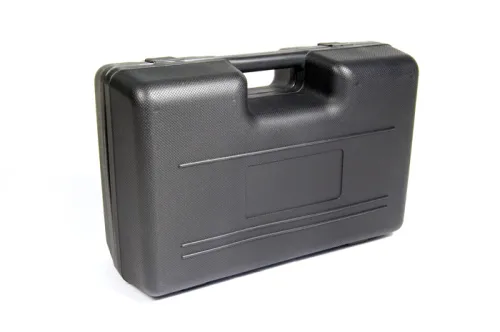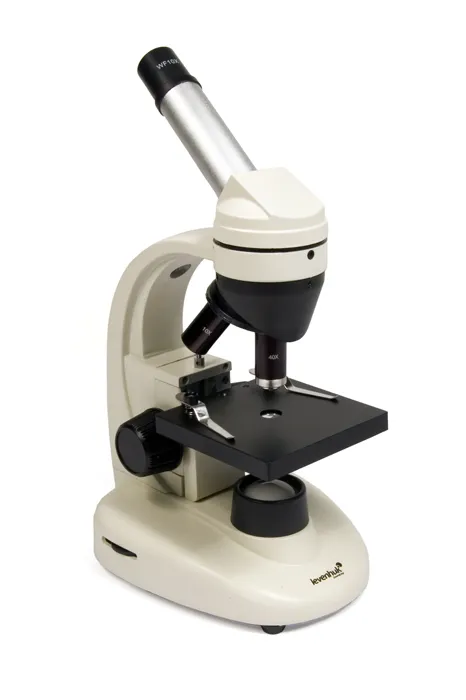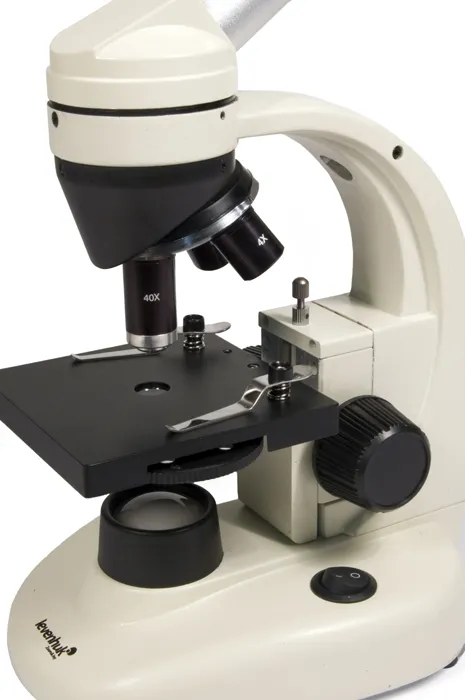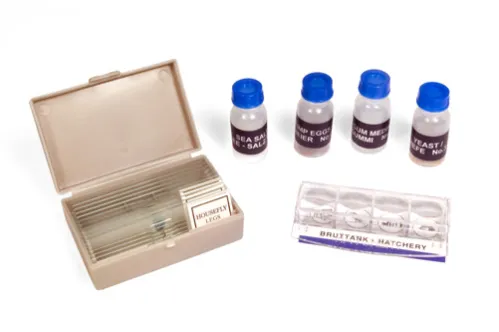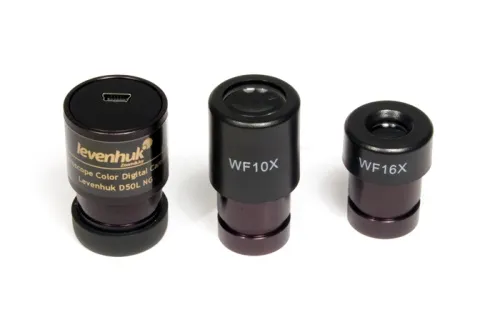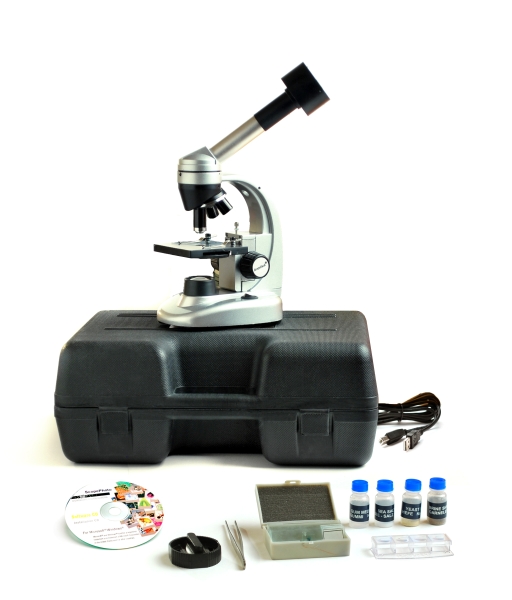Levenhuk D50L NG Digital Microscope
Digital microscope of advanced quality and configuration
| Product ID | 66798 |
| Brand | Levenhuk, Inc., USA |
| Warranty | lifetime |
| EAN | 2400000012573 |
| Package size (LxWxH) | 26x15x40 cm |
| Shipping Weight | 3.5 kg |
Levenhuk D50L NG Digital Microscope allows you to take on high-quality research as well as take photos/videos of your observations. This model can be connected to a PC. Levenhuk D50L NG uses a USB interface, and software that is included in the kit.
This microscope is designed to provide the best possible color rendition when capturing photo and video images and enables viewing images in the true colors.
Levenhuk D50L NG Digital Microscope was developed for use in schools, colleges and universities. This model features glass optics, unlike the less expensive analogs. The main advantage is two sets of illumination (upper and lower) which allow observing both slices and non-transparent objects (from the tiniest solid particles to coins, etc.).
Apart from observing and image capturing on the PC screen, it is also possible to make observations in the visual mode without a camera, since two eyepieces (WF10x and WF16x) are included in the package.
Levenhuk D50L NG Digital Microscope is widely used as the modern equipment of choice in various educational institutions.
The main advantage of the Levenhuk D50L NG is the highest quality of the optical elements and metallic construction. These materials provide high-quality images and make the microscope long lasting (for at least 30 years).
A USB cable is used as the camera power supply and for connection with a PC. Compatible OS: XP/2003/Vista/7/8/10.
Magnification
Magnification depends on the objectives (located below) and eyepieces (located above) being used.
The set includes two eyepieces and three objectives as well as Barlow lens which allows to smoothly change the magnification ratio.
The minimum magnification is: Eyepiece 10x Objective 4x = 40x
Maximum magnification is: Eyepiece 16x Objective 40x = 640x, and with Barlow lens magnification smoothly reaches 640*2.0 = 1280x!
Illumination
This microscope is designed with important features – lower illumination with adjustable brightness and removable upper illumination. Built-in illumination is LED, which ensures the minimal power consumption yet gives ample light.
Illumination systems are located above and below the stage, and allow observing both transparent and opaque objects: from the tiny solid particles to coins, paper, fabrics, etc. (It would be fascinating to observe a mobile phone screen under the D50L NG – actually, each pixel consists of three segments, red, green and blue.)
The kit includes:
- Microscope
- Objectives: 4x, 10x and 40x
- Digital camera Levenhuk D50L (2 Mpx)
- Two eyepieces: WF10x, WF16x
- Barlow lens: 2x
- SETUP CD Levenhuk ToupView (auto setup guide, drivers, software for image visualization, fixation and processing)
- USB cable
- Stage with clips
- Diaphragm disk
- Built-in lower LED illumination
- Retractable upper halogen illumination
- AC adapter
- 3 AA and 2 AAA batteries
- "Attractive Microscope. Scrutinizing the Microcosm" User Guide
- Forceps
- Hatchery for brine shrimp
- Microtome (tool for making fine slices for observation; allows obtaining specimen slices of sub-millimeter thickness)
- Flask with yeast
- Flask with pitch for making specimens
- Flask with sea salt
- Flask with brine shrimp (a sea organism used as a food source for fish)
- 5 ready-to-use specimens
- 5 blank slides
- Dust cover
- Plastic case
- User manual and lifetime warranty
The latest version of Levenhuk ToupView software for Windows (release date: 11/20/2013) supports eight languages: English, French, German, Polish, Russian, Simplified Chinese,Traditional Chinese, Turkish.
Observing non-transparent objects
Levenhuk D50L NG Digital Microscope, unlike other teaching microscopes, is equipped with two illuminations. Illumination systems are located above and below the stage, and allow observing both transparent and opaque objects.
Power supply
The microscope features an AC adapter, for stationary observations without batteries.
Caution: Please refer to the specifications table for the correct mains voltage and never attempt to plug a 110V device into 220V outlet and vice versa without using a converter. Remember that mains voltage in the U.S. and Canada is 110V and 220–240V in most European countries.
Some things you can see under a microscope:





Levenhuk D50L NG Digital Microscope is also compatible with Levenhuk digital cameras (additional cameras are purchased separately). Levenhuk cameras are installed in the eyepiece tube instead of an eyepiece.
Microscopes Comparison Table
| Levenhuk D2L NG Digital Microscope | Levenhuk D50L NG Digital Microscope | Levenhuk D70L NG Digital Microscope | |
|---|---|---|---|
| Head | monocular | monocular | monocular |
| Video recording | yes | yes | yes |
| Maximum resolution | 640x480 | 1600x1200 | 1600x1200 |
| Megapixels | 0.3 mpx | 2 mpx | 2 mpx |
| Head | rotatable | rotatable | not rotatable |
| Barlow lens | no | 2x | no |
| Objectives | 4х, 10х, 40х | 4х, 10х, 40х | 4х, 10х, 40х |
| Eyepieces | WF16х | WF10x, WF16x | WF10x |
| MAX magnification, x | 640 | 1280 | 1600 |
| Stage, mm | 90x90, with stage clips | 90x90, with stage clips | 90x95, coordinate moving stage with clips |
| Stage moving range, mm | from 0 to 10 | from 0 to 15 | from 0 to 10 |
| Brightness adjustment | yes | yes | yes |
| Dust cover | no | yes | yes |
| Case | no | yes | yes |
| Upper illumination | fixed | retractable | fixed |
| Lower illumination | fixed | fixed | fixed |
| Body | silumin | metal | metal |
| Eyepiece tube | metal | metal | plastic (LCD display) |
| Illumination power supply | AC adapter, batteries | AC adapter, batteries | AC adapter, batteries (not included) |
| Camera power supply | USB cable | USB cable | USB cable |
| Levenhuk K50 Experiment Kit | no | yes | yes |
| "Attractive Microscope. Scrutinizing the Microcosm" User Guide | no | yes | yes |
| Forceps | no | yes | yes |
| Hatchery for brine shrimp | no | yes | yes |
| Microtome | no | yes | yes |
| Flask with yeast | no | yes | yes |
| Flask with pitch | no | yes | yes |
| Flask with sea salt | no | yes | yes |
| Flask with brine shrimp | no | yes | yes |
| Ready specimens | no | yes | yes |
| Blank slides (5 pieces) | no | yes | yes |
| Product ID | 66798 |
| Brand | Levenhuk, Inc., USA |
| Warranty | lifetime |
| EAN | 2400000012573 |
| Package size (LxWxH) | 26x15x40 cm |
| Shipping Weight | 3.5 kg |
| Type | digital |
| Optics material | optical glass |
| Magnification, x | 40 — 640 |
| Eyepieces | WF10x, WF16x |
| Objectives | 4x, 10x, 40x |
| Revolving nosepiece | for 3 objectives |
| Stage, mm | 90x90 |
| Stage moving range, mm | 0–15 |
| Power supply | 220V AC adapter, 50Hz |
| Maximum resolution | 1600x1200 (2MP) |
| Megapixels | 2 |
| Video recording | yes |
| Image format | *.bmp, *.jpeg, *.jpg, *.png, *.tif, *.tiff, *.gif, *.psd, *.ico, *.emf |
| White balance | automatic, manual |
| Exposure control | automatic, manual |
| Usage location | eyepiece tube (replaces an eyepiece) |
| Method of exposure | ERS (Electronic Rolling Shutter) |
| Software, drivers | USB 2.0 driver, Levenhuk camera program (for Mac and Linux use Levenhuk Image Editor) |
| Programmable options | brightness, image size, shutter time |
| Output | 480 Mbps, USB 2.0 |
| System requirements | OS Windows 2000/XP/2003/Vista/7/8/10; USB 2.0 |
| Camera power supply | via USB Cable 2.0 |
| Camera operating temperature range, °С | -30...+70 |
and downloads
We have gathered answers to the most frequently asked questions to help you sort things out
Find out why studying eyes under a microscope is entertaining; how insects’ and arachnids’ eyes differ and what the best way is to observe such an interesting specimen
Examples of what you can see with Levenhuk Rainbow 50L, 50L PLUS and D50L PLUS Microscopes
Read this review to learn how to observe human hair, what different hair looks like under a microscope and what magnification is required for observations
Learn what a numerical aperture is and how to choose a suitable objective lens for your microscope here
Learn what a spider looks like under microscope, when the best time is to take photos of it, how to study it properly at magnification and more interesting facts about observing insects and arachnids
This review for beginner explorers of the micro world introduces you to the optical, illuminating and mechanical parts of a microscope and their functions
Short article about Paramecium caudatum - a microorganism that is interesting to observe through any microscope

